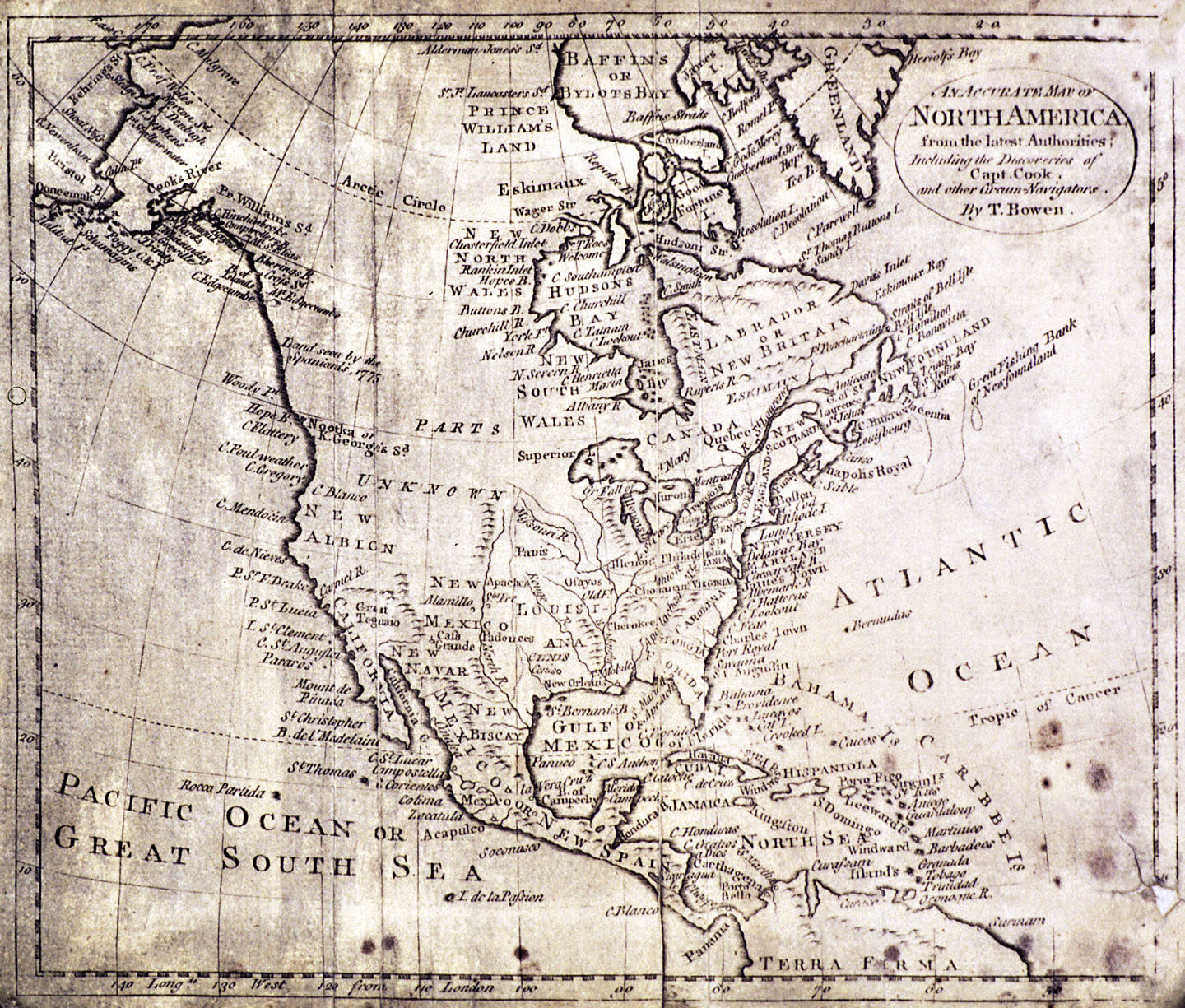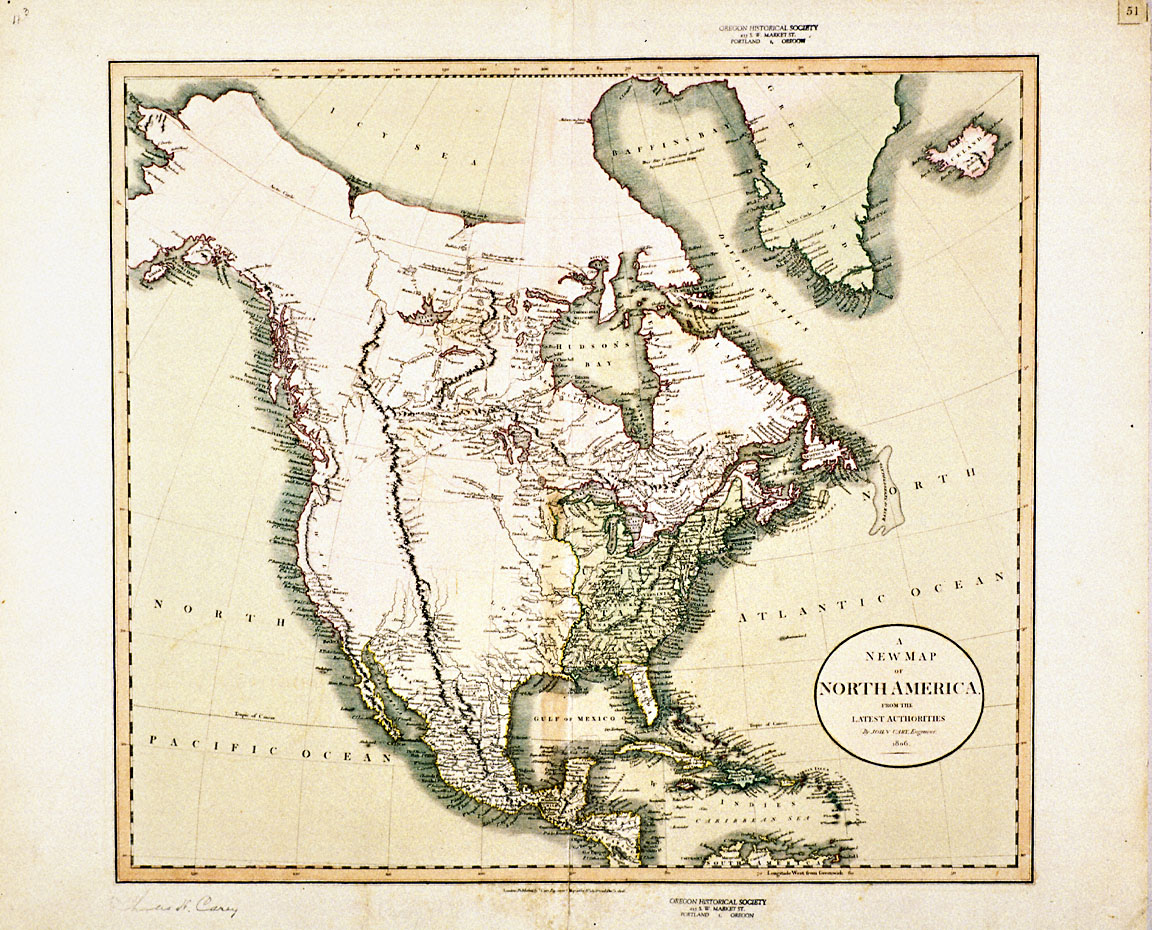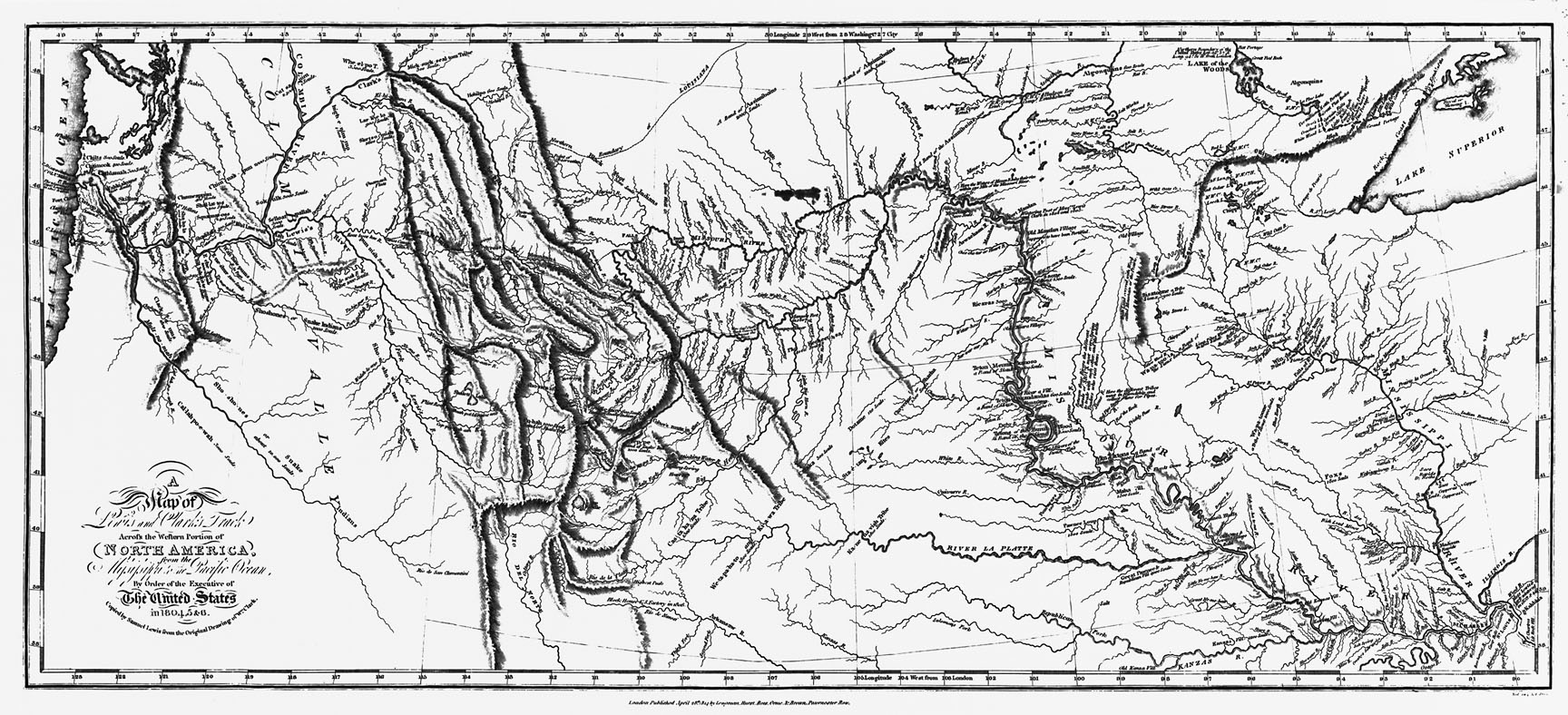6. New Map of North America, 1806
John Cary (1754-1835) produced this map of North America in 1806. Cary, a London-based engraver, was one of the most influential mapmakers and publishers of his time. He is best known for producing several detailed atlases of England.
Cary’s map reveals the state of European and American geographical knowledge of North America at the time of the Lewis and Clark Expedition. While Mexico and the eastern portion of the continent are mapped in detail, large portions of the interior are left blank. Most of the Pacific Northwest is uncharted, though the coastline is accurate and fairly detailed thanks to the discoveries of James Cook, George Vancouver, and other maritime explorers.
Among the most striking geographic features of this map are the Rocky Mountains. While it was an accepted fact in the early 1800s that a range of mountains divided the continent, the precise contours of the range were unknown. Some Americans and Europeans held the theory that the Rockies were a single ridge that spanned the continent from north to south. This view of the continental divide is expressed here in Cary’s map.
View source6 of 7




